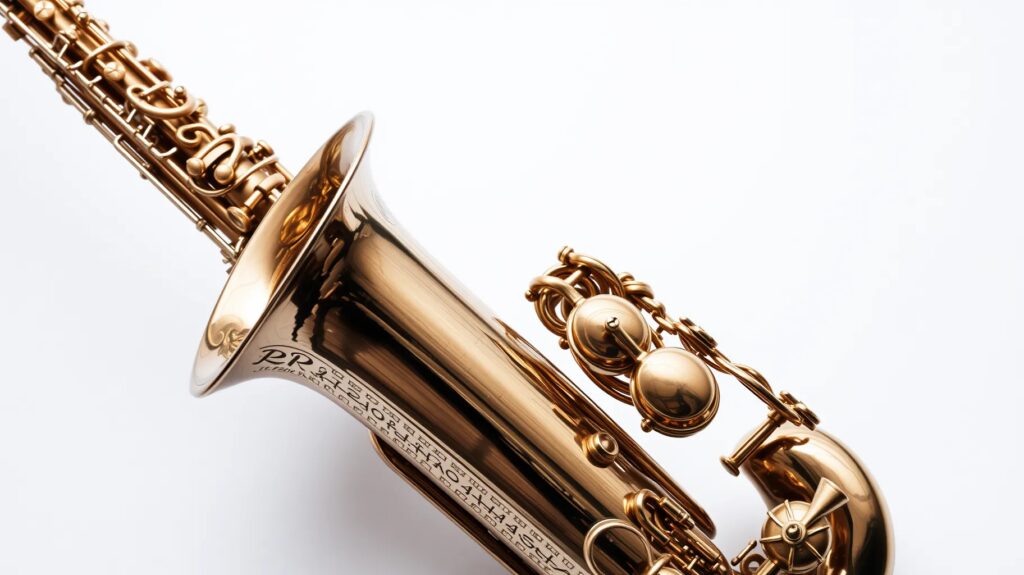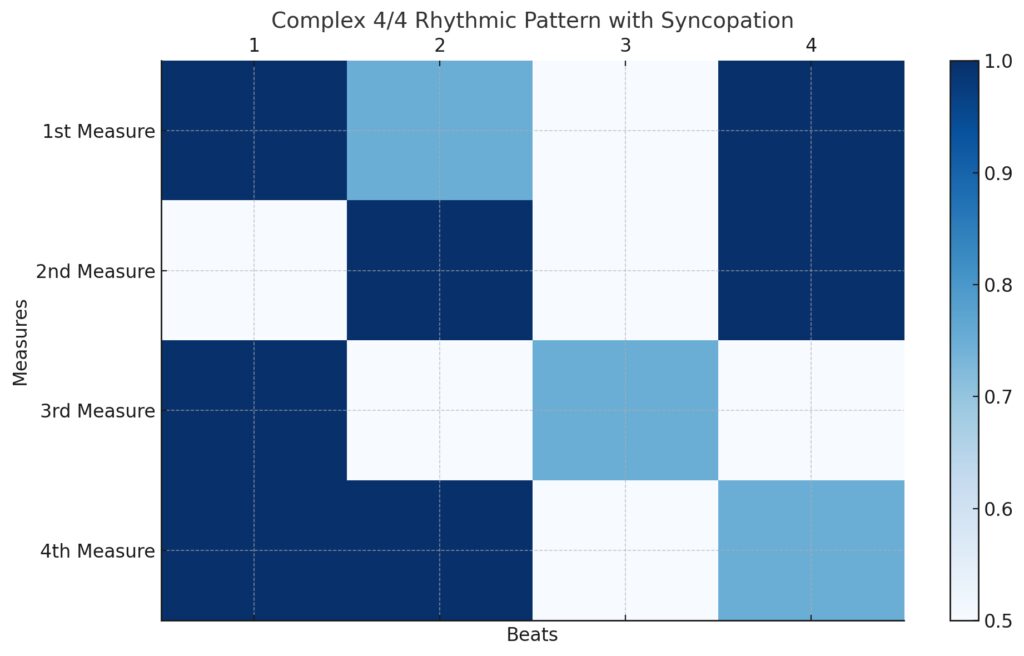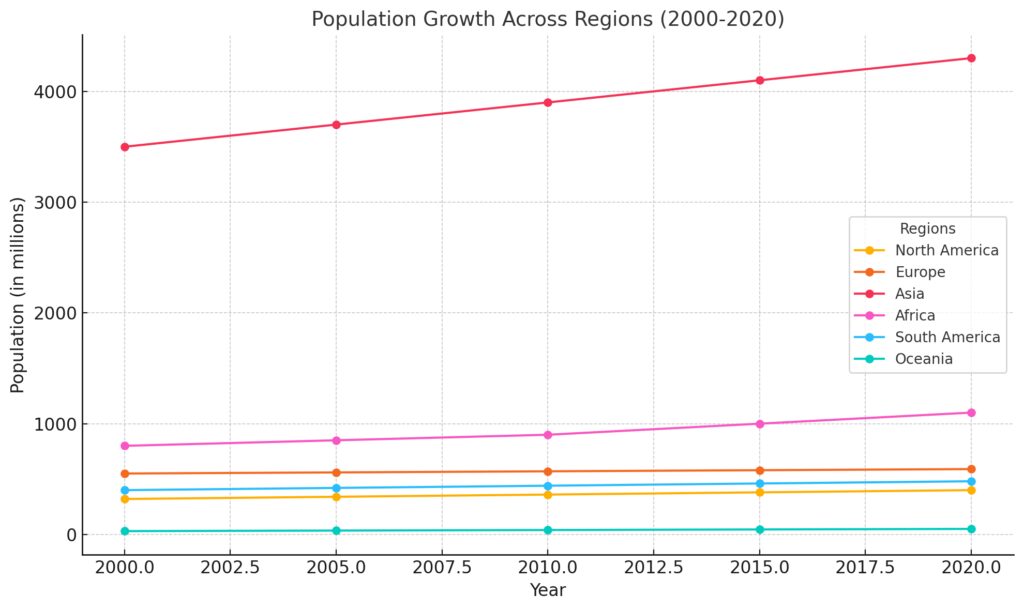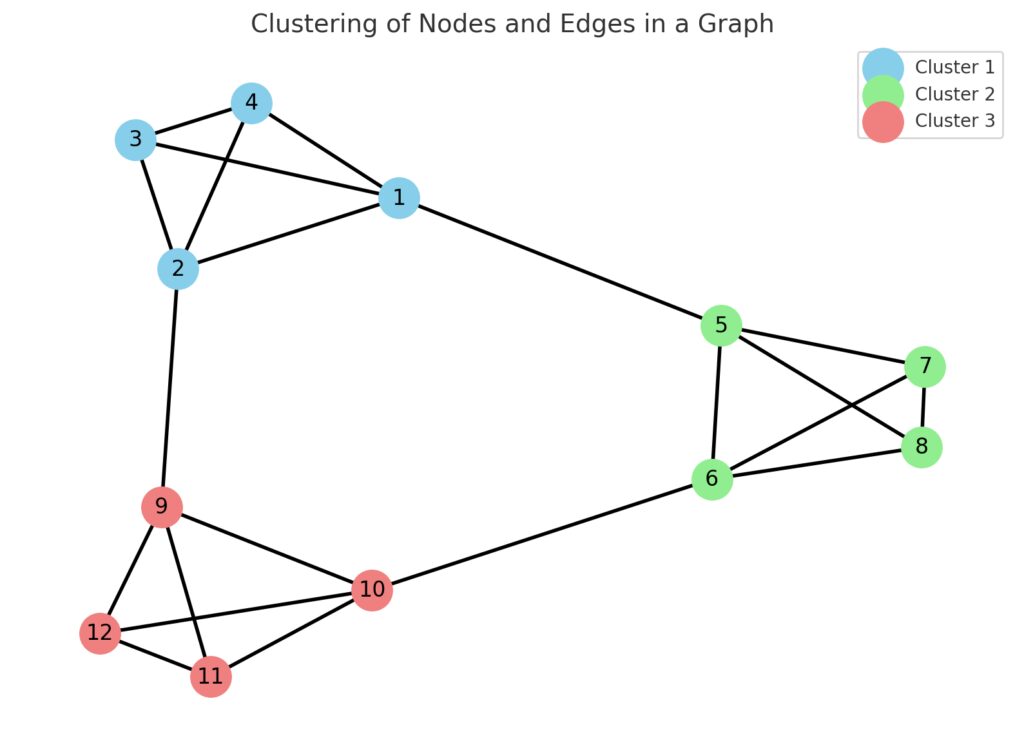What is LDA and Why It’s Not Just for Text
Latent Dirichlet Allocation (LDA). Do you think about its roots in text analysis? It’s been famous for uncovering hidden themes in huge collections of documents.
However, the same principles that make it useful in text can be applied to non-textual data too, such as images, music, and graph structures.
LDA, in essence, is a topic modeling algorithm. It assumes that each piece of data is a mix of several “topics” and breaks it down into its core components. It’s like deconstructing a complex dish into its ingredients—except LDA does this for more than just words.
You can think of LDA as a flexible tool—something that doesn’t need text to function. It can work in any dataset that has hidden patterns and structure, as long as it can be mapped out in a way that aligns with the core assumptions of LDA.
The Science Behind Latent Dirichlet Allocation (LDA)
Before diving into applications, let’s take a closer look at how LDA works. It is built on the idea of probabilistic modeling. LDA assumes that each data point can be represented by multiple latent topics—concepts you cannot see directly but that influence the structure of the data.
In the case of documents, LDA looks at the frequency of words. But in other datasets, we replace words with more relevant elements, like pixel clusters in images, or chord patterns in music.
LDA uses Bayesian inference to assign probabilities to these topics, mapping out which ones are more dominant in a given dataset. The beauty of LDA is that it doesn’t require labels, making it a powerful tool for unsupervised learning. It’s all about discovering hidden patterns and relationships.
Applying LDA to Image Data: Revealing Hidden Patterns
When you look at an image, you see it as a whole—maybe a landscape, a person, or an object. LDA doesn’t see it this way. Instead, it treats an image like a collection of features or components.
In the case of images, these features could be color patches, textures, or specific shapes. By using LDA, you can break an image into smaller, coherent sections, like topics in a document. This application is often called topic modeling for visual content.
Imagine looking at a photograph of a forest. LDA can break this down into distinct visual “topics” such as trees, leaves, or animals. These topics are then used to categorize the image, providing insights into its structure.
Topic Modeling for Visual Content: How LDA Breaks Down Images
In image processing, LDA can be used for segmentation—the process of dividing an image into meaningful parts. If you have a photo of a cityscape, for example, LDA might identify topics such as buildings, sky, and roads, each corresponding to a certain cluster of pixels. This helps in automated image categorization and tagging.
Researchers have explored feature extraction using LDA to group images into categories without needing any prior labels. By breaking down images into “visual topics,” we can discover relationships that aren’t obvious to the human eye.

This ability to classify images makes LDA a useful tool in areas like medical imaging, where identifying subtle patterns can lead to better diagnosis and treatment plans.
Image Segmentation with LDA: Simplifying Complex Scenes
Another fascinating application of LDA in image data is image segmentation. Instead of focusing on labeling, LDA allows a computer to detect and organize regions within an image. By treating pixel intensity and proximity as features, LDA helps divide complex scenes into distinct regions.
In medical fields, this can be revolutionary. For example, LDA can segment X-ray or MRI scans, allowing doctors to quickly identify abnormal growths or other areas of interest. Urban planners can use LDA to automatically analyze satellite images, identifying different land use types like parks, industrial areas, and residential zones.
While not traditionally the first algorithm used in image processing, LDA’s unsupervised learning approach is growing in value for applications where manual labeling is difficult or impractical.
LDA Meets Music: Finding Themes in Sound Waves
Music is made up of complex patterns, much like language. LDA, which excels at finding latent topics, can be applied here too. By treating certain features of sound—such as chords, rhythms, or timbres—as analogous to words in text, LDA can uncover underlying themes in musical compositions.
Just as LDA can tell which topics dominate a document, it can analyze which sound features are most common in a song or across genres. This can help in identifying genre or mood—is the piece upbeat, melancholic, or somewhere in between?
This application of LDA in music is especially valuable for companies like Spotify or Pandora, who rely on algorithms to suggest music. By understanding what “topics” or themes are prevalent in a user’s listening history, they can recommend music that aligns with the user’s preferences.
Uncovering Genre and Mood in Music with LDA
Music is much more than just a collection of sounds—it’s filled with mood, style, and genre. When LDA is applied to music, it can analyze songs in a way that mirrors how it tackles text data. Think of each song as a document, and instead of words, we now have musical features like tempo, rhythm, and key changes.

By breaking down these musical features, LDA identifies different themes or genres within a song. For instance, in a single piece of music, LDA might find traces of jazz, classical, and electronic elements. This is especially helpful when analyzing fusion genres or modern songs that defy traditional genre boundaries.
Music streaming platforms, like Spotify, use this technique to recommend songs with similar patterns to those a user enjoys. As LDA learns more about a user’s preferences, it becomes better at understanding the mood and style of music that resonates with them, resulting in more personalized music recommendations.
Sound Classification with LDA: Beyond Human Ears
When applied to sound waves, LDA offers an analytical tool that goes beyond what the human ear might pick up. Just like it identifies hidden topics in text, LDA can find underlying patterns in sounds, creating clusters that can classify sounds into different categories.
This is useful in speech recognition, where LDA can separate different phonemes—the basic building blocks of sound in language—helping software distinguish between different accents or dialects. Beyond language, it’s also applied in environmental sound analysis, such as identifying types of sounds in nature or urban settings.
Imagine using LDA to analyze the soundscape of a bustling city. It might reveal dominant sound “topics” like traffic noise, human chatter, or construction sounds. These applications can be used to monitor noise pollution or understand sound dynamics in different environments.
From Melodies to Topics: How LDA Structures Musical Data
Just like text documents can be seen as combinations of different topics, songs can also be considered as combinations of musical themes. LDA can break a song into different components such as melody, harmony, and rhythm, identifying which elements dominate in certain sections of the composition.

For instance, LDA could reveal that a song’s verse is dominated by a slow melodic theme, while the chorus bursts into an upbeat rhythmic pattern. This can be useful for musicologists who study the structure of compositions, or even for creating algorithms that generate music with specific qualities.
LDA also helps in automatic music tagging. Instead of manually tagging songs with terms like “upbeat” or “melancholic”, LDA can infer these characteristics based on patterns in the music itself, allowing for better automatic playlist generation.
Graph Data and LDA: A Powerful Combination
LDA’s ability to uncover hidden topics isn’t limited to text or music. In fact, one of its most fascinating applications is in the realm of graph data. Graphs are used to represent relationships between data points, like in social networks or knowledge graphs. LDA can break these networks down, clustering nodes and edges based on common features.
Imagine a social network like Twitter, where millions of users interact. LDA can identify hidden communities or subgroups within the network by analyzing who interacts with whom. Instead of treating the network as a random web of connections, LDA gives structure by identifying key topics that link users together.

Similarly, in knowledge graphs, where entities like people, places, or concepts are connected through relationships, LDA helps by grouping related concepts into coherent themes, revealing previously hidden insights about how different ideas are interconnected.
Clustering Nodes and Edges in Graphs Using LDA
Applying LDA to graph structures allows for the discovery of patterns in network data. In social networks, for example, LDA can cluster users based on common topics of interaction, such as shared interests, professions, or political views. This is especially valuable for platforms like Facebook or LinkedIn, where finding communities is central to user experience.
In more technical fields, like bioinformatics, LDA can be applied to gene interaction networks. Researchers can use LDA to identify groups of genes that share similar functions or are involved in the same biological processes. This helps with understanding how certain diseases are linked to specific genetic pathways.

The power of LDA in graph data lies in its ability to make sense of complex relationships, uncovering structure and order in otherwise overwhelming data. It’s a great tool for anyone trying to make sense of the interconnectedness of data, from social media analysis to scientific research.
Social Networks, Graph Theory, and LDA: Mapping Relationships
In the age of social media, data from platforms like Twitter and Facebook are vast and complex. Social networks are essentially graphs, where users are nodes and their interactions form the edges. By applying LDA to this structure, we can identify communities or clusters of users who share common interests or interact frequently.
For example, LDA might reveal that a certain group of Twitter users tends to talk about topics related to climate change or technology trends. This makes it easier to study social influence, track trending discussions, and even identify influencers within a community.
Moreover, advertisers and marketers use this insight to target the right audience. By understanding which topics are popular among certain groups, they can create tailored marketing strategies, improving engagement and conversion rates.
LDA in Knowledge Graphs: Making Connections Between Concepts
Knowledge graphs are used by companies like Google to store information about how different entities—like people, places, and events—are connected. Applying LDA to knowledge graphs helps in clustering related concepts into meaningful themes.
For example, in a knowledge graph containing information about movies, LDA can group related entities like directors, actors, and genres into topics. So, if you’re analyzing a cluster around sci-fi movies, LDA might reveal relationships between directors known for sci-fi, actors who frequently appear in that genre, and even certain special effects used commonly in those films.
This application is key for search engines or recommendation systems, where relevant content needs to be suggested based on the relationships between different entities. Google’s search algorithm, for example, relies heavily on such knowledge graphs to show you more meaningful and accurate results when you search for related terms.
Potential Future Applications of LDA Beyond Text Data
As we continue to generate more data in various forms—whether it’s visual, audio, or structural—LDA’s ability to model latent topics offers numerous potential applications beyond its traditional role in text.
In self-driving cars, for instance, LDA could help process camera input, identifying key topics such as roads, pedestrians, or vehicles. This could make it easier for the AI to understand complex environments and respond appropriately to changes in the scene.
In video analysis, LDA might be used to identify different “topics” or scenes within a film, automatically categorizing sequences based on action, dialogue, or setting. This could revolutionize how streaming platforms index and suggest movies based on specific elements like fight scenes, romantic moments, or dramatic plot twists.
Another growing field for LDA is bioinformatics. Researchers can use LDA to analyze genomic data, identifying hidden patterns that link certain genes to diseases. This could speed up medical research and improve diagnostics by giving doctors more insights into how genetic variations affect health.
Challenges and Limitations of Using LDA in Non-Textual Data
While LDA is powerful, applying it to non-textual data isn’t without its challenges. One major issue is how to represent non-textual elements like pixels in images or chords in music as “words” in a way that LDA can process.
In text data, words have clear boundaries and well-defined meanings. But in images or sounds, the boundaries between features are fuzzier. For example, two adjacent pixels in an image may belong to completely different objects, making it difficult to model clear “topics” in a visually coherent way.
Another challenge is that LDA assumes independence between words or features. In text, this assumption works reasonably well. But in data like music or graphs, the features are often highly correlated—notes in a melody, for instance, are strongly dependent on each other. Ignoring these relationships can reduce the effectiveness of LDA in identifying meaningful topics.
That said, advanced variations of LDA have been developed to better handle these issues, like correlated topic models or spatial LDA for image data. These adaptations are helping to push the boundaries of where LDA can be applied.
The Role of Preprocessing: Preparing Image, Sound, and Graph Data for LDA
Before you can apply LDA to non-textual data, the raw data must be preprocessed into a format the algorithm can work with. In text data, preprocessing might involve removing stop words or stemming words down to their base form. For images, sounds, or graphs, the preprocessing steps are more complex.
For images, you might need to transform raw pixel data into feature vectors that represent the key characteristics of different parts of the image. This could involve techniques like edge detection or color histograms to break down the visual content into something LDA can analyze.
In music, the preprocessing could involve Fourier transforms to convert sound waves into their component frequencies, or breaking a song into short time windows to capture the progression of notes and rhythms.
Graphs require preprocessing in the form of node and edge features. This might involve extracting important structural information, such as degree centrality (how many connections a node has) or betweenness centrality (how often a node acts as a bridge between other nodes).
The quality of the preprocessing has a huge impact on how well LDA performs, so it’s crucial to carefully design these steps when applying LDA beyond text.
Why LDA Still Matters in a World of Deep Learning
With the rise of deep learning, some might wonder if LDA still has a place in modern data analysis. After all, deep learning models like neural networks are known for their ability to handle complex data types, including images and sound.
But LDA remains relevant because of its simplicity and interpretability. While deep learning models often operate as “black boxes” (where it’s hard to understand how they’re making decisions), LDA offers clear insights into how topics are distributed in data. This transparency makes LDA valuable in areas where understanding why a model made a certain prediction is just as important as the prediction itself.
Moreover, LDA requires far fewer resources than deep learning. Training a neural network on large datasets can be time-consuming and computationally expensive, while LDA can deliver meaningful results much more efficiently, making it a good choice for applications where speed and transparency are more important than absolute accuracy.
In many cases, LDA can be used alongside deep learning as part of a hybrid model, combining the strengths of both approaches. By doing so, data scientists can leverage the interpretability of LDA while still harnessing the power of deep learning for more complex tasks.
With these possibilities in mind, it’s clear that LDA has many exciting applications beyond text—opening doors to new ways of analyzing and understanding data in our increasingly digital world.
Resources
LDA and Topic Modeling
- Introduction to Latent Dirichlet Allocation on Towards Data Science provides a clear introduction to how LDA works, including its mathematical background and practical applications in text analysis.
- LDA in Python using Scikit-learn: The official documentation provides detailed examples of how to implement LDA for various datasets, including links to related algorithms.
Applying LDA to Non-Text Data
- Latent Dirichlet Allocation for Image Data: This research paper explores how LDA can be adapted to process image data, especially in the context of object recognition and image segmentation. It provides technical insights into applying LDA to images.
- Topic Models for Audio Data: This paper discusses the adaptation of LDA for music and audio signals, with practical examples of using topic modeling to identify genres, moods, and more in music data.
LDA and Graph Data
- Topic Modeling in Graphs (AAAI Paper): This paper presents techniques to apply LDA for graph data to find communities and latent topics in social networks and other graph-based systems.
- Understanding Graph Structures with LDA: A comprehensive study on how LDA is used to analyze large-scale graphs and extract meaningful community structures.
Music and LDA
- Analyzing Music with Topic Models: This research paper from the International Society for Music Information Retrieval (ISMIR) shows how LDA can be applied to classify music, extract key themes, and even identify moods from compositions.
General Resources on LDA and Its Advanced Variants
- Probabilistic Topic Models by David Blei, the creator of LDA, is a detailed yet accessible overview of LDA, its applications, and potential extensions beyond text.
- LDA for Data Science on Machine Learning Mastery: A beginner-friendly introduction to LDA with a focus on its implementation in Python and extensions to non-text data.